
Circularity in Growing Food
Growing food is a complex system. Nature works on her own time. You can plan ahead, but sometimes this will not be enough. But the one constant is the amazing circularity that is at work. What I mean by this is simply the fact that what you use and harvest can be used again and again in different forms. One "tool" that helps with this circularity is composting. The leaves can provide food for us and the compost bugs; the stems can be dried for the fire and added as ash and charcoal to the compost. The seeds become new plants and the dead material that is compost feeds the new plants. In turn, these new plants will also die and be turned into compost and new plants. Ad infinitum.
In this post, I take you on the journey of my little setup and how I grow and harvest some of my food. This is on a very small scale, and it is not enough even just for myself, but the empowerment is great. And knowing where your food is coming from is even better. But the most rewarding thing of all is to know you are part of a bigger circularity that is going on underneath everything. I will explain more in due course.
It Starts with a Humble Seed (Or, It All Ends with Seeds)
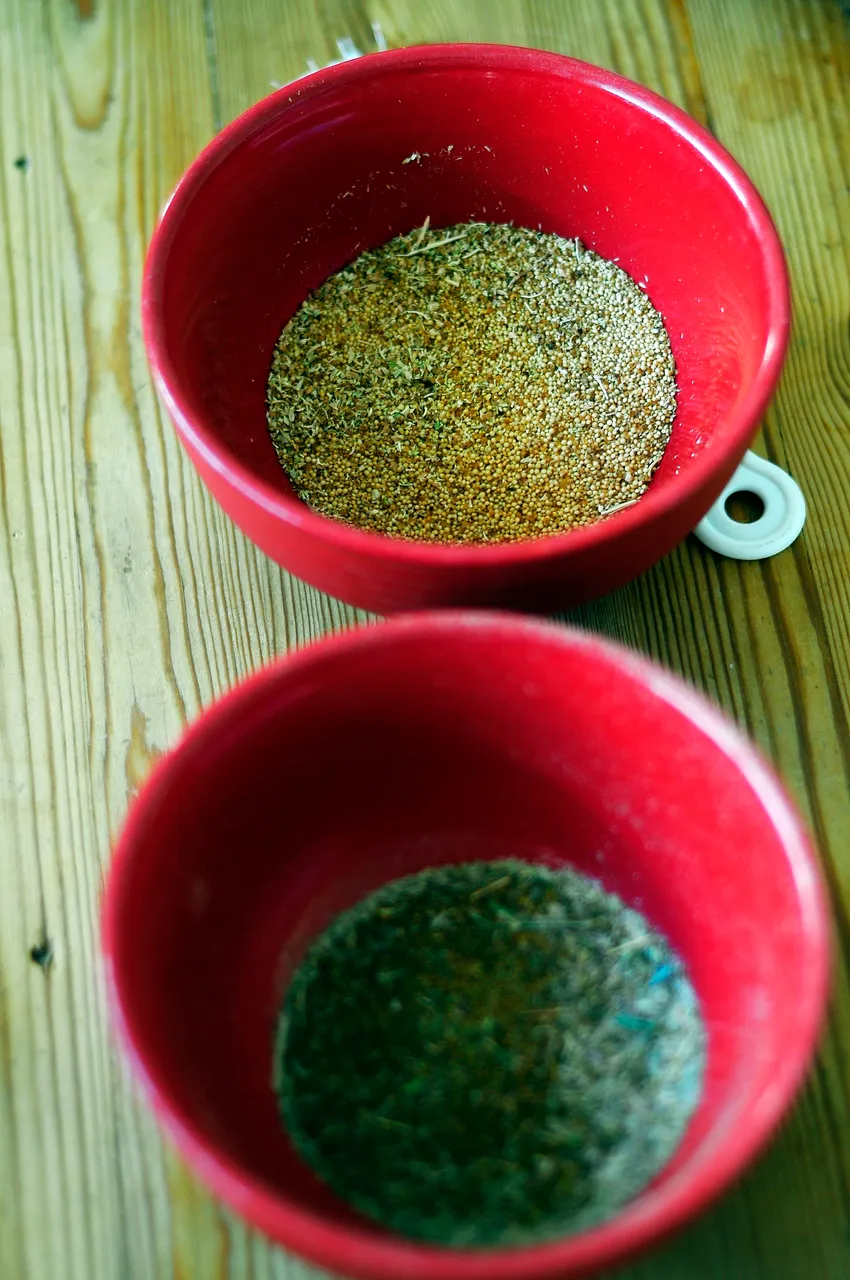
It depends on how you view the timeline, but the seed can be seen as the start of the process or the eventual goal towards which you strive. But in the end, everything revolves around the seed. Most people buy seeds, as this is the easiest and most reputable for providing safe seeds. If you have the knowledge, you can also find some wild seeds or seeds in the wild. I found some Lamb's Quarters (Chenopodium album) growing in the vineyards where I live and harvested some. This is the first year they took in my garden and I harvested two buckets of seeds. With one good growing season, you will have ample seeds for countless future growing seasons.
Harvesting seeds of plants that go to seed is always fun. You have various plants, annuals, bi-annuals, and perennials. Wild rocket (Diplotaxis tenuifolia), being perennial, will give you almost infinite amounts of seeds. I started with a handful of seeds and my garden is being taken over by wild rocket. The amount of seeds that one plant can produce is staggering. I have harvested seeds from the same plants three times already and they are producing even more. I will never run out of wild rocket. (I have so many seeds by now that I am growing wild rocket microgreens. You know you have too many seeds when you are able to grow microgreens.)
Growing food and letting the plants go to seed and then harvesting the seeds give you a certain feeling of empowerment. It gives you the certainty that next year, there will be a new growing season. It is a storage system for the future. And this leads to composting, which is a similar storage system for the future and an integral part of the circular system.
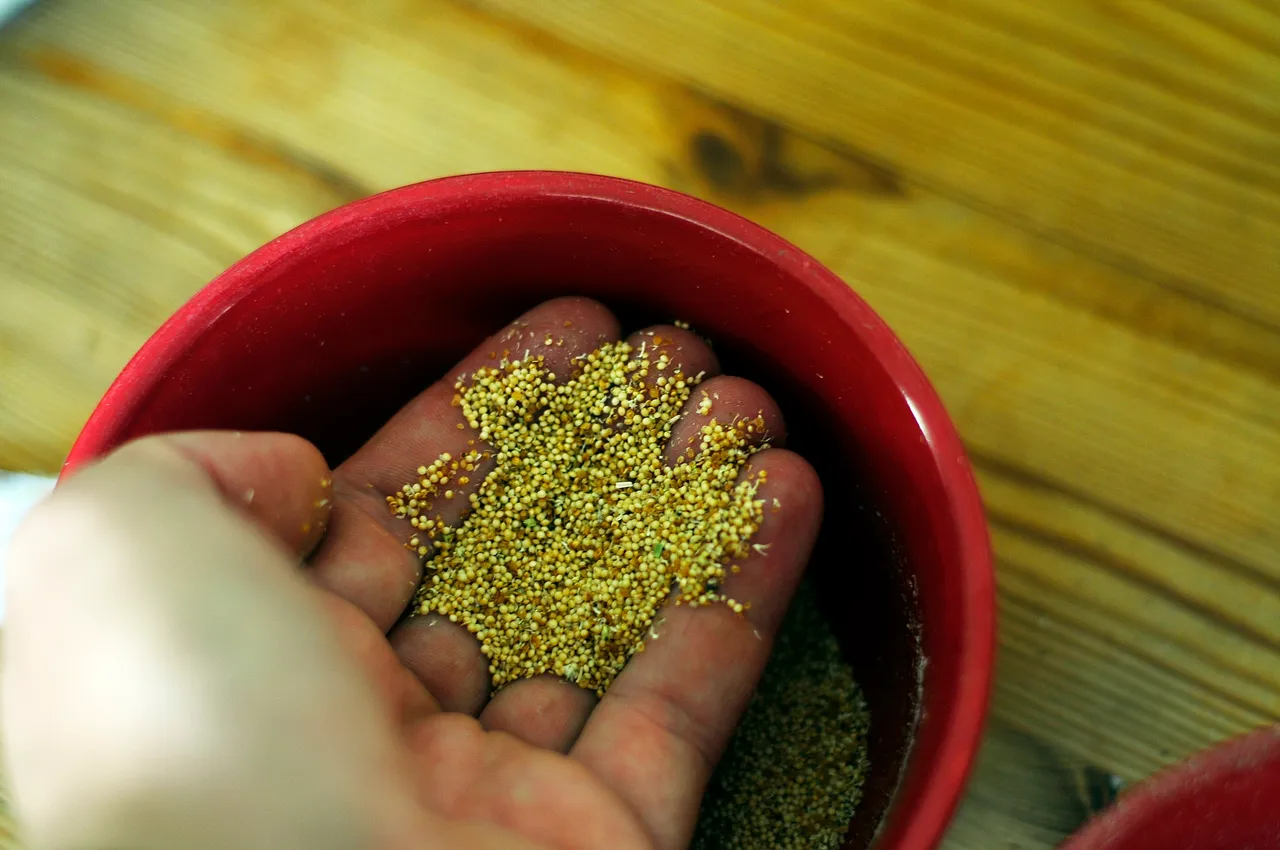
Composting: Where Circularity Begins
Making compost is very easy. I follow a very haphazard method and it has worked for me over the years. It also forms the most important part of circular farming in my opinion. From the dead plant matter, new life emerges. Nothing goes to waste. The compost "machine" takes everything you would have thrown away and turns it into a nutrient-dense living organism that will feed future plants. It also feeds the soil and keeps your plants healthy.
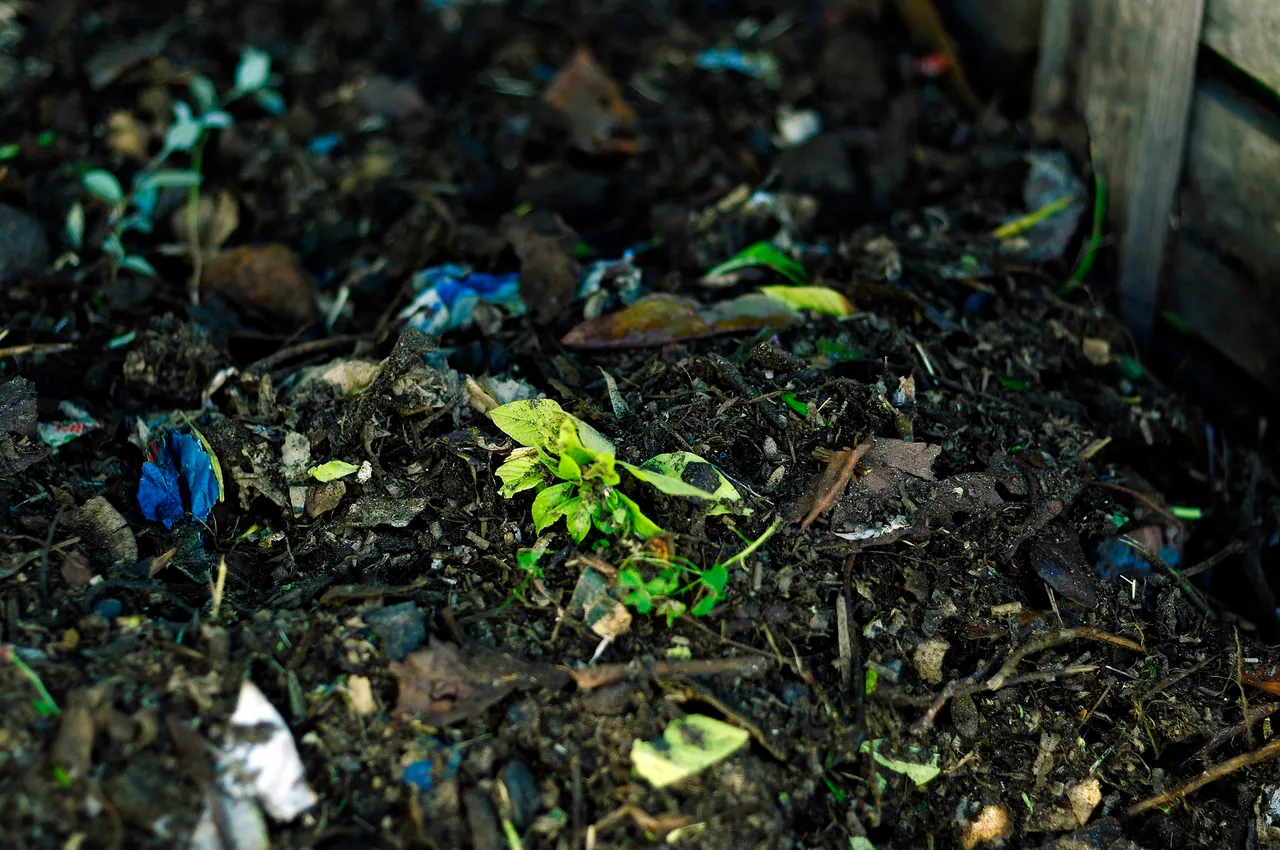
I harvested loads of Amaranth(us) yesterday. My hands are still aching. I stripped all of the leaves and threw them in the compost. The bigger stalks I will dry out and use in the pizza oven or barbeque food. The ash and charcoal from these stalks will also end up in the compost, adding either much-needed nutrients or creating sort of sponges soaking up all the already-present nutrients.
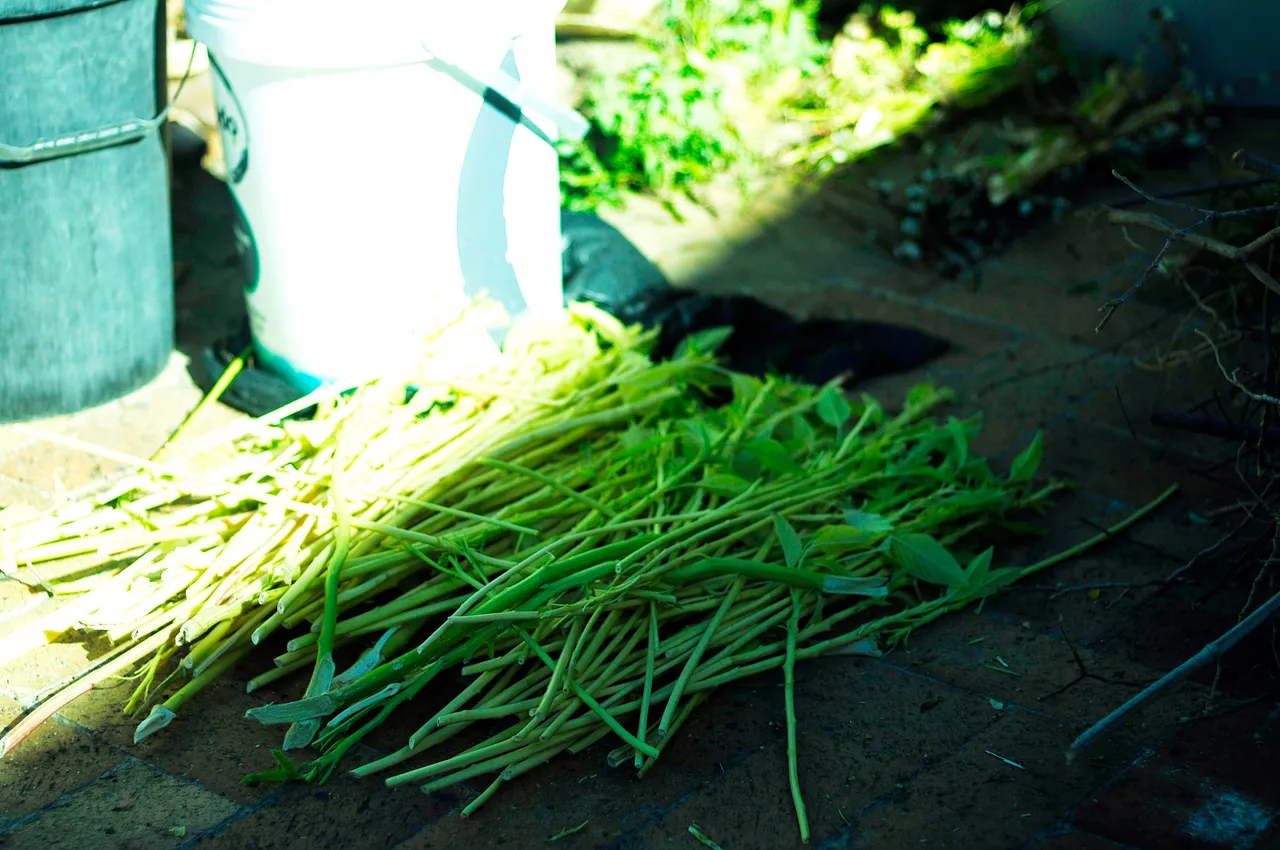
If you start to see every element of gardening as integral to the circular system, you will soon realize how many resources you have at your hands. Again, the most important part is composting.
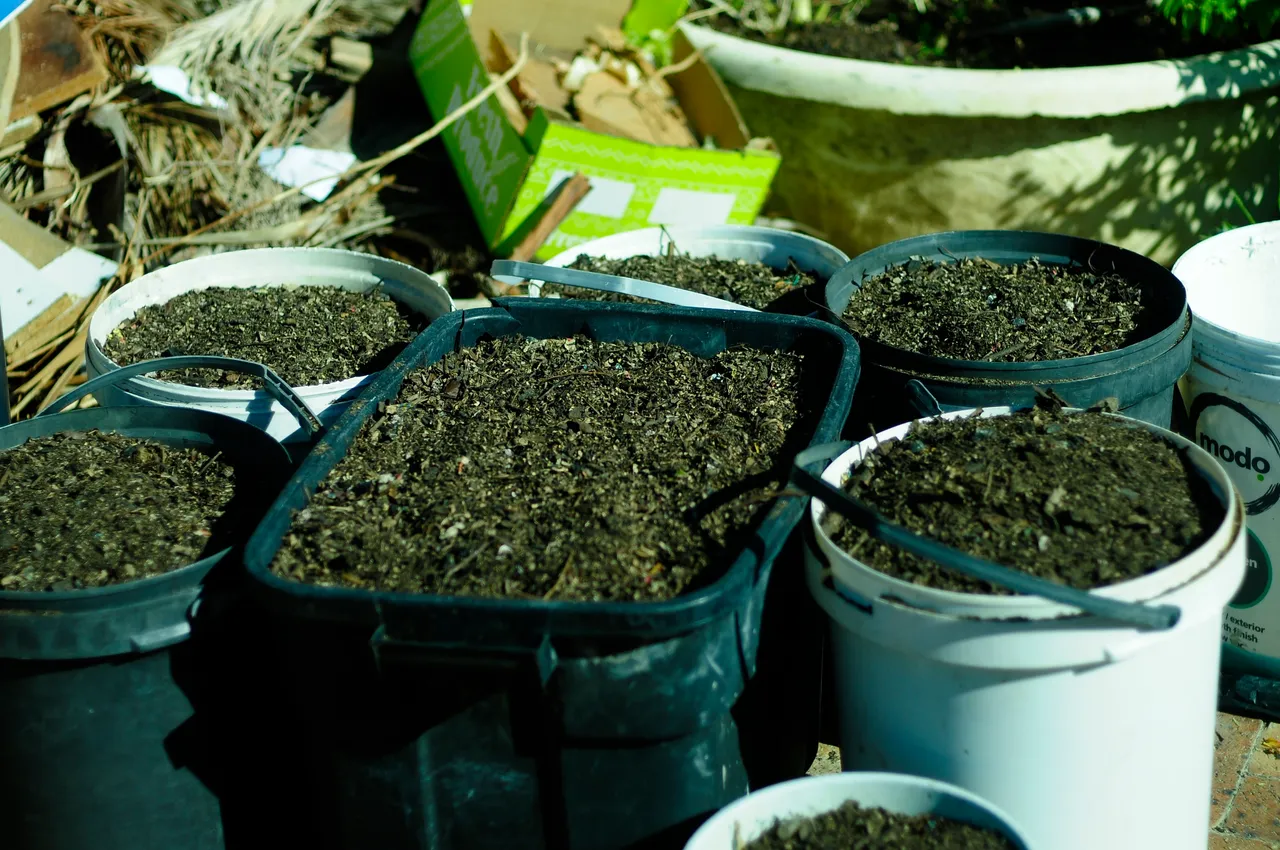
When your garden begins to produce "surplus", you will have a constant supply of compost. Grass clippings, leaves, stalks, charcoal, food waste, everything will feed the "hungry" system.
I worked all of the harvested material into the compost as this will feed the next cycle. It also acts as a "gym" or exercise to burn calories and to help you focus a little on something else. Planting seeds will also help with that.
Planting Seeds: The Next Season
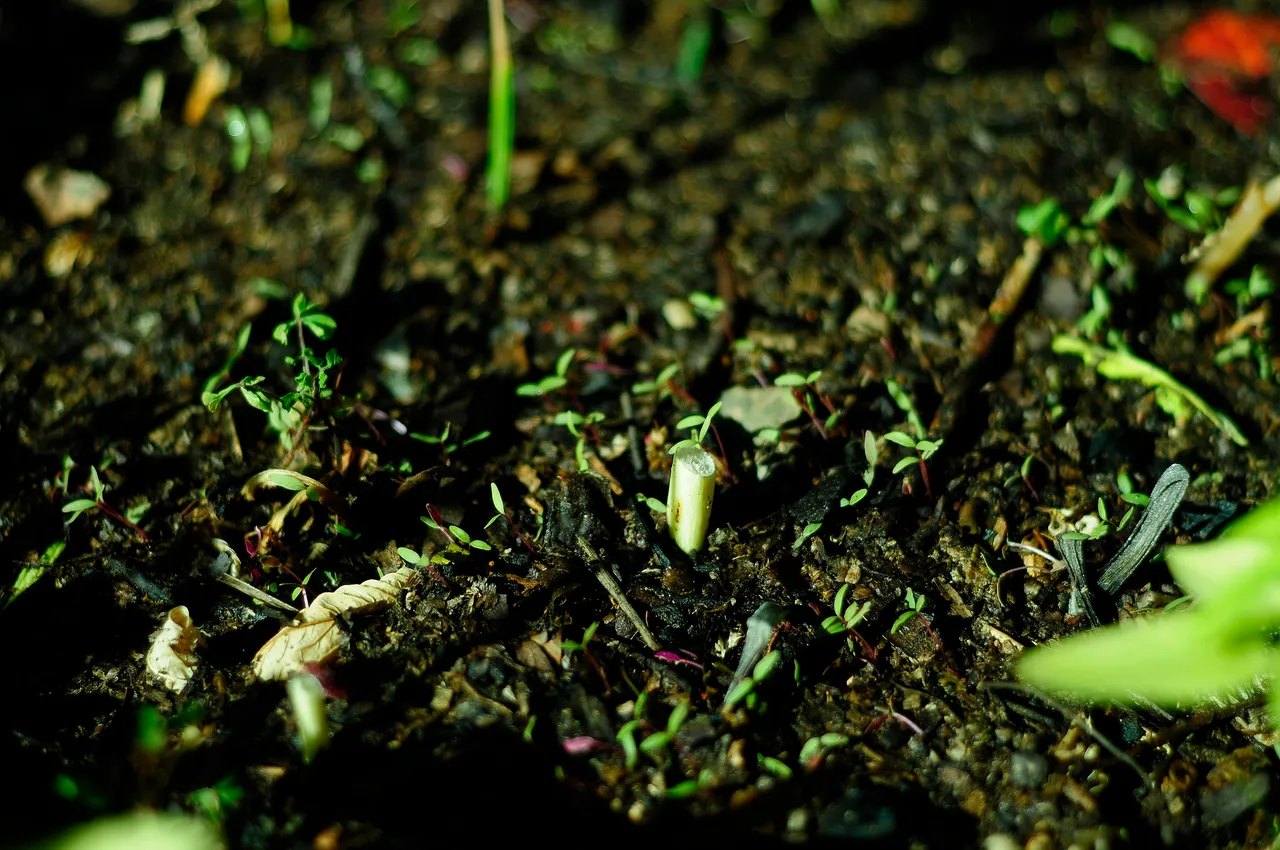
I do not take out plants after I harvested them. Above, you can see that I merely cut the plant and leave the roots in the soil. This will (i) rot and (ii) create air pockets in which new roots can grow more easily. I just add another layer of compost on top each time season. Seedlings from self-sowing are great as these plants will flourish the most. Amaranth will grow so easily and take over a piece of a garden in one season due to all of the seeds it produces.
In that raised garden bed, as you can see, I just let the amaranth self seed, but I added some Salad rocket (Eruca sativa) for the winter. It flourishes in the winter and grows really big leaves if it has the space.
In another bed, I planted some Swiss Chard (Beta vulgaris) seeds as most of my plants have died off or produced seeds. Swiss chard is a bi-annual and this year all of mine went to seed. I should have planted some last year, but my beds were used for my lamb's quarters as well which also went to seed this year.
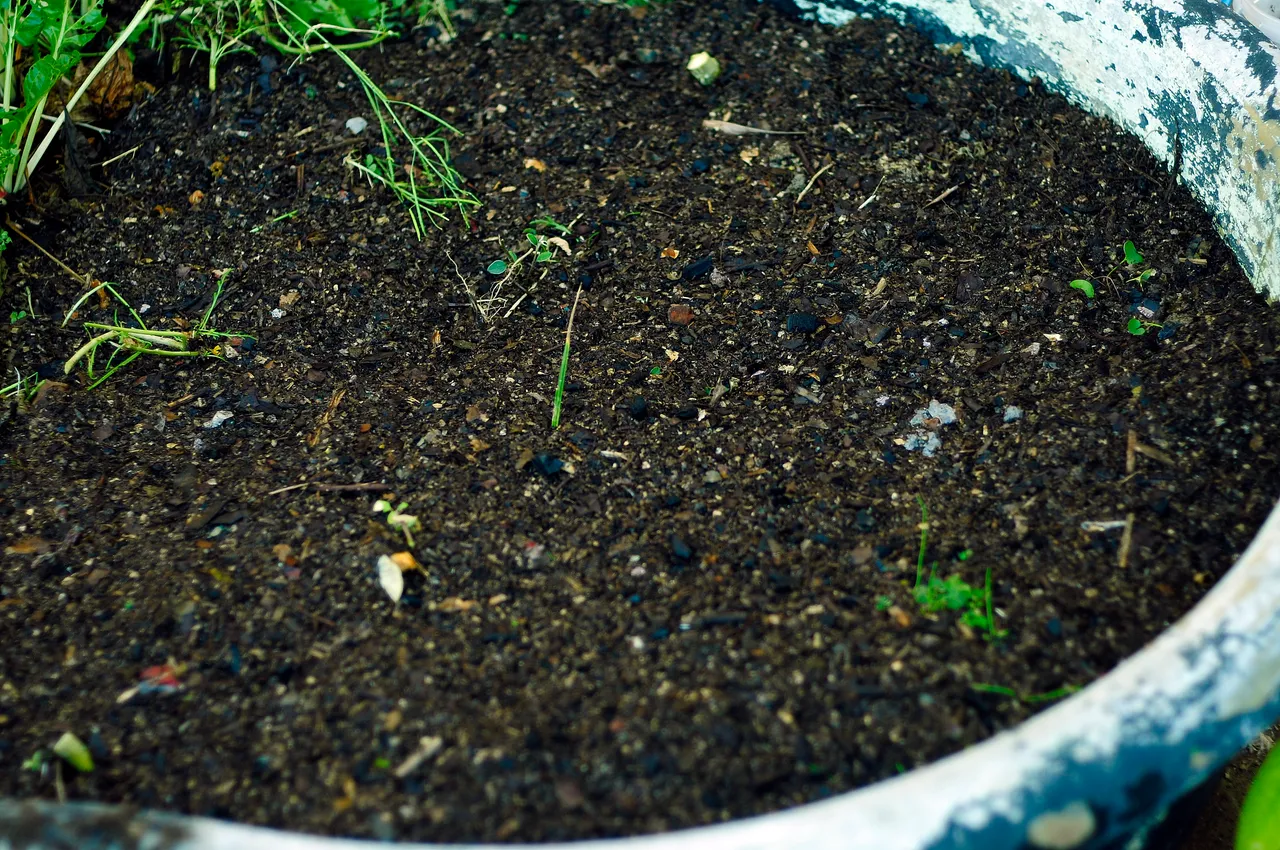

Post Harvest: Raw Material and Future Produce
After the harvest, you are left with various materials. The raw material, I already said, I worked into the compost. The next phase is seed storage.

Seed heads need to dry out. The seeds will then be harvested and all of the chaff and dried leaves will also be used as raw material for compost. Again, circularity.
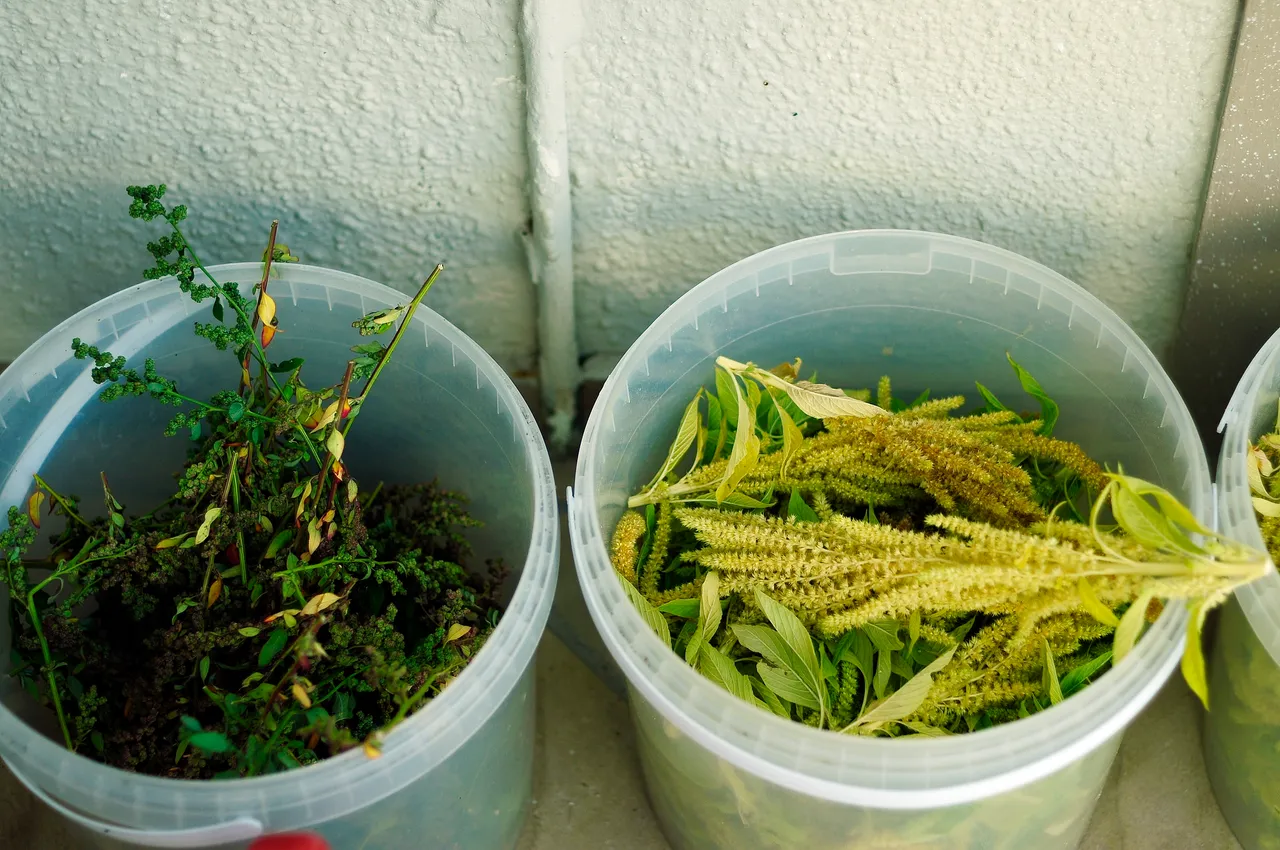
After the seed heads have dried out, the whole process starts over. Or, in fact, the process overlaps other processes. It is never truly linear, but always circular. That is, the process might look linear but it mostly happens concurrently. Seedlings pop up before the harvest happened, and seedlings pop up out of season. Nature determines her own time.
Postscriptum, or Ad Infinitum Circularity
This post is already too long. To sum up, all the above: nature provides ample resources for us to use. We can use this in a circular system in which it feeds itself. Dead plants become the growing material for new plants which leads to new seeds for future growing seasons, all the while providing food and nourishment for us.
I harvested my amaranth and lamb's quarters yesterday and processed a previous harvest of amaranth, wild rocket, and basil. I planted all of the harvested basil, some of the wild rocket, and some new salad rocket and swiss chard. Hopefully, the winter and the rain will do the seedlings well. In any case, I hope you found something of value in this post. All of the musings are my own, and the photographs were taken with my Nikon D300 and Nikkor 50mm f/1.8 lens. Stay safe and happy gardening.